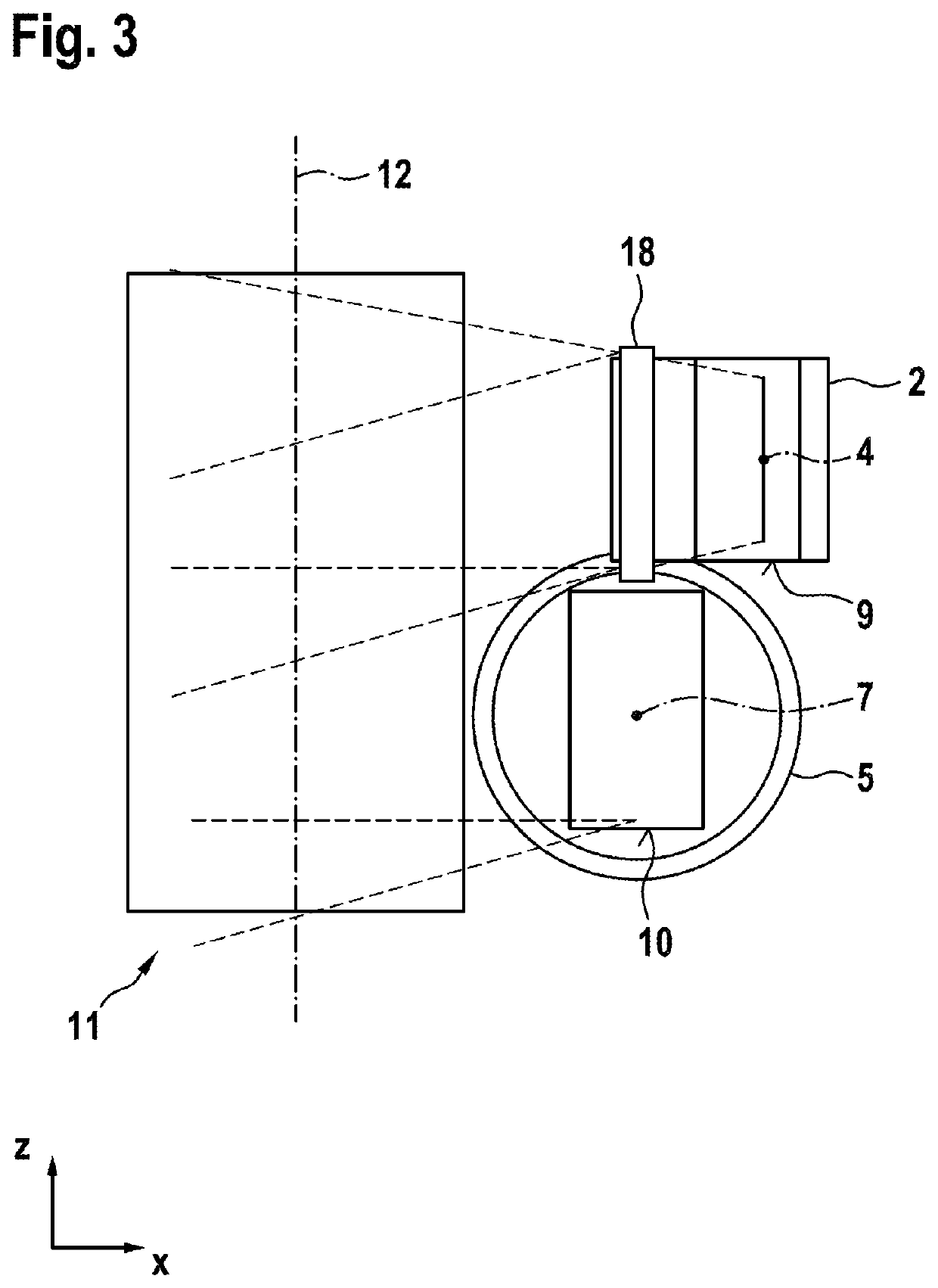Lidar sensor
a technology of lidar sensor and sensor body, which is applied in the field of lidar sensor, can solve the problems of reducing service life, complicated rotor design, and increasing costs, and achieves compact design, compact design, and reduced size of lidar sensor.
- Summary
- Abstract
- Description
- Claims
- Application Information
AI Technical Summary
Benefits of technology
Problems solved by technology
Method used
Image
Examples
Embodiment Construction
[0034]FIG. 1 shows a LIDAR sensor 1 according to one specific embodiment of the present invention. LIDAR sensor 1 is illustrated from a top view that depicts an XY plane. LIDAR sensor 1 includes an optical transmitting unit 2, an optical receiving unit 5, a deflection optical system 8, and a scanning unit 11. Optical transmitting unit 2, optical receiving unit 5, deflection optical system 8, and scanning unit 11 are situated at a housing 15 of the LIDAR sensor. One side of housing 15 includes a viewing window 14.
[0035]Optical transmitting unit 2 is configured to emit a scanning beam 3 in the direction of an optical axis 4 of optical transmitting unit 2. In this specific embodiment, optical transmitting unit 2 is a line laser, a laser line of the line laser being oriented in parallel to a rotational axis 12 of scanning unit 11 and emitted as a scanning beam 3. This means that the laser line generated by optical transmitting unit 2 in the illustration of LIDAR sensor 1 shown in FIG. 1...
PUM
 Login to View More
Login to View More Abstract
Description
Claims
Application Information
 Login to View More
Login to View More - R&D
- Intellectual Property
- Life Sciences
- Materials
- Tech Scout
- Unparalleled Data Quality
- Higher Quality Content
- 60% Fewer Hallucinations
Browse by: Latest US Patents, China's latest patents, Technical Efficacy Thesaurus, Application Domain, Technology Topic, Popular Technical Reports.
© 2025 PatSnap. All rights reserved.Legal|Privacy policy|Modern Slavery Act Transparency Statement|Sitemap|About US| Contact US: help@patsnap.com



